Weather conditions in Florida make it an ideal place for a variety of wild berries to flourish. We will talk about 9 different Florida wild berries in the paragraphs below.

Muscadine Grapes
Muscadine grapes (Vitis rotundifolia) are a species of grapevine native to North America. They are characterized by their round, thick-skinned fruits that can range in color from bronze to dark purple. Muscadine vines are vigorous climbers that thrive in full sun. They make a great native plant to grow in your backyard since they’ll climb your fence. You may find them in the wild growing up along trees and fences or sprawling across the ground in open spaces.
You’ll recognize muscadine with its heart-shaped leaves. The tender young leaves can be cooked until soft in hot water and eaten, or they can be used to wrap other foods. They flower in early spring, forming clusters of small greenish-yellow flowers. The berries are bigger than the grapes you’re used to seeing at the grocery store. They have seeds and thick skins, which some people may be turned off by. But the skins are full of dietary fiber and antioxidants that can help protect against cholesterol and heart disease. They come in different colors, from bronze to purple, while wild grapes may stay green through maturity.
Muscadine grapes are not only edible but also highly sought after for their sweet and tangy flavor. They can be eaten fresh, used in jams, jellies, or even turned into wine.
When ripe, muscadines pull easily from the vine. While you may find them growing in June, they are typically at their peak and ready for harvest in the fall. Look for muscadine grapes in Florida in September and October.

Elderberry
Elberberries (Sambucus canadensis) are native to North America and thrive in the state of Florida. They are usually found near water sources and have clusters of small, dark purple berries.
A word of caution, elderberry bushes and unripe berries contain toxins called cyanogenic glycosides. Only elderberry flowers and ripe fruit are safe to eat.
It’s also not advisable to eat raw elderberries at any stage of ripeness. When consumed raw, these berries may cause vomiting, nausea, and general stomach upset. Elderberries can be eaten cooked and are very popular in recipes for pies, jams, and syrups. Cooked elderberries are high in fiber and have many health benefits.
You can find elderberries growing in Florida late in the spring. Mid-June is typically the best time to pick these wild fruits.
Medicinal uses of Elderberries
Elderberries contain substances called flavonoids which appear to reduce swelling and inflammation and boost the immune system. In limited studies, elderberry extracts ease flu symptoms, including fever, headaches, sore throats, fatigue, cough, and body aches. See
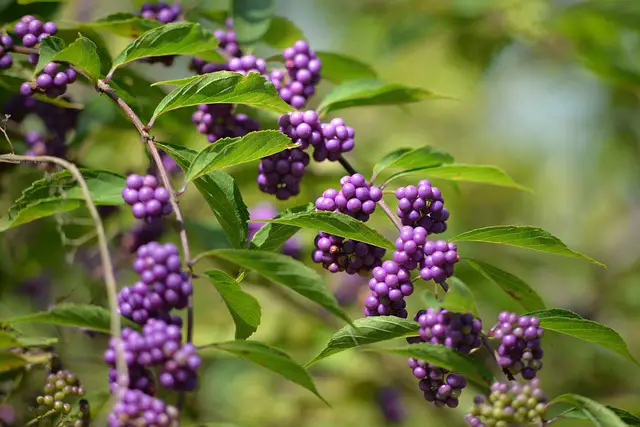
Beautyberry
Beautyberries (Callicarpa americana) grow wild in Florida. These berries are notable for their vibrant, unique color. The color is sometimes called bright purple, but it’s really more of a fuschia. Once you see the specific color for yourself in person, you’ll have an easy time identifying these bright berries in the future. They grow in thick clusters on shrubs with woody stems that are often found in Florida along roadsides and in pineland. They are also a popular ornamental plant in gardens, parks, and natural landscapes.
While the berries of Beautyberry are not typically eaten fresh, they can be used to make jelly or wine.
In Florida, you’ll find beautyberries ripe on the shrub in September and October.
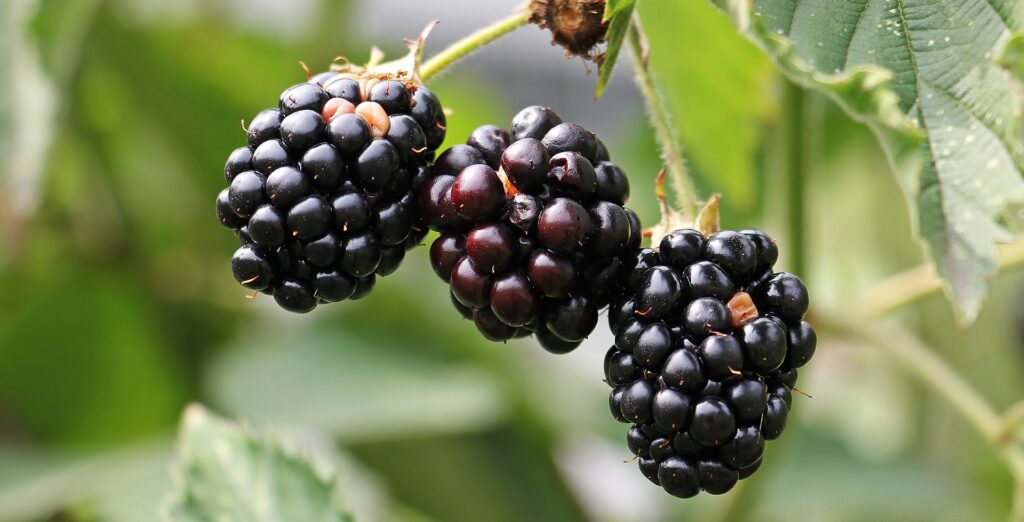
Wild Blackberries
There are a few different types of blackberries growing wild across Florida, but all of them have the thorn-covered vines you’d expect to find when looking for wild blackberries. They also look remarkably similar to the type you purchase in the grocery store. They have the same health benefits, too. A diet of blackberries benefits from fiber, vitamin C, and manganese.
Blackberries are dark purple-black when fully ripe and grow on thorny canes. They are commonly found in the wild, including along trails and in wooded areas.
When picking blackberries, you’ll want to be careful of the previously mentioned thorns. It’s a good idea to wear long sleeves and jeans, gloves, and possibly bring pruning shears or scissors along with you. If you’ve ever pulled blackberries off a vine, you also know that when these berries are ripe, they are juicy. You’ll likely stain your fingers if you’re not wearing gloves. You’ll want to be careful of squishing the berries as well.
Because they are so soft and juicy, blackberries make a great addition to pies or a base for jams. These sweet-tart berries will first appear red but will be nearly black when they are ripe. According to this publication from the University of Florida, blackberries in the state ripen in the late spring or early summer, typically in May and June. Some years, the season starts as early as April.
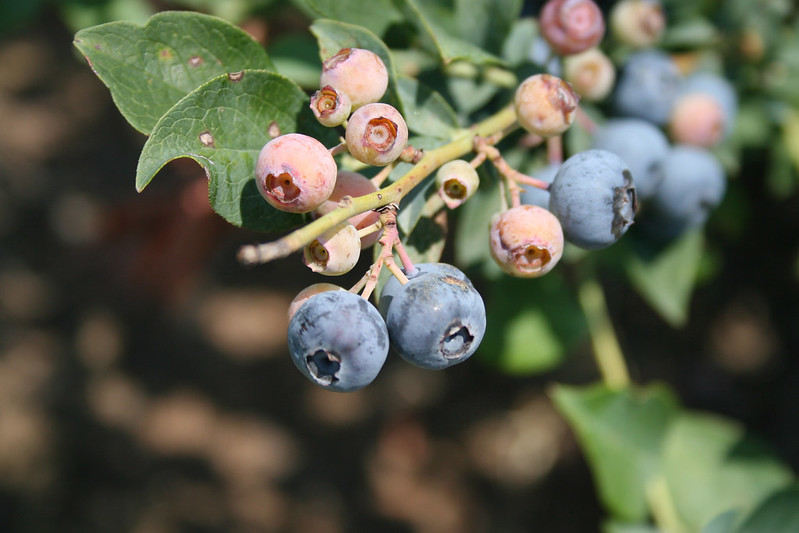
Wild Blueberries
There are quite a few different varieties of wild blueberries growing across Florida. The most common are the southern highbush blueberries and rabbit eye. Before picking blueberries in the wild, you’ll want to become more familiar with these varieties. Highbush blueberries will look a lot like the kind most people are familiar with seeing at the grocery store. Lowbush varieties are sweeter but a great deal smaller. The rabbiteye blueberry is native to the southern United States. This type of berry gets its name from its unique coloring. The rabbiteye blueberries start off pink and turn blue as they ripen. The early coloring looks similar to that of the eye of a white rabbit.
Florida’s blueberries ripen in March and can still be found all the way through May. While you may find wild blueberries anywhere in Florida, they are more plentiful in central Florida and north Florida.
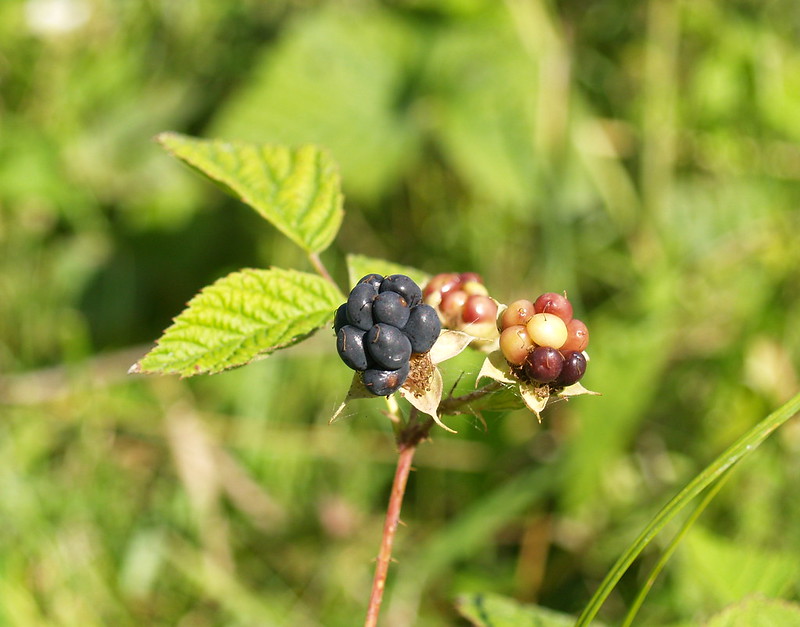
Dewberries
Dewberries (Rubus trivialis) are closely related to blackberries and have similar dark, juicy fruits. They are often found trailing along the ground or climbing over low vegetation.
Like blackberries, dewberries are edible and can be used in the same culinary applications. Their sweet-tart flavor makes them a delightful addition to desserts.
In the northern United States, foragers find ripe dewberries in June and July. However, in Florida, dewberries ripen in May.
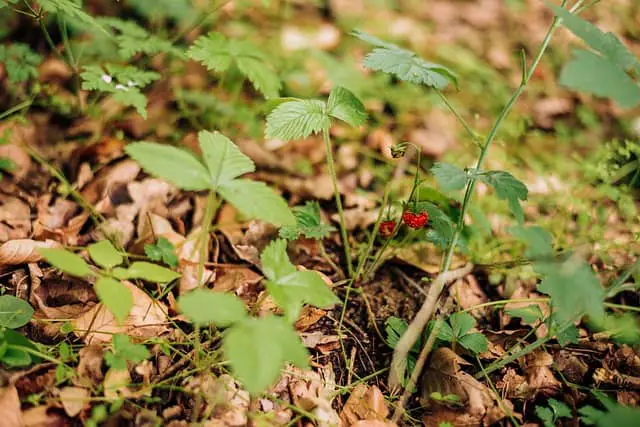
Wild Strawberries
Wild strawberries (Fragaria virginiana) are smaller than the cultivated fruits you find at the grocery store. In the wild, you’re looking for very small, very sweet berries. Wild strawberries may be smaller, but they pack a sweet, aromatic punch. When ripe, they are a bright red and very fragrant. They grow in a variety of habitats, including open fields and woodland edges.
Like the kind you find in the grocery store, wild strawberries can be eaten fresh, used in salads, or added to your favorite recipe.
In Florida, you’ll want to look for ripe strawberries in February and March.
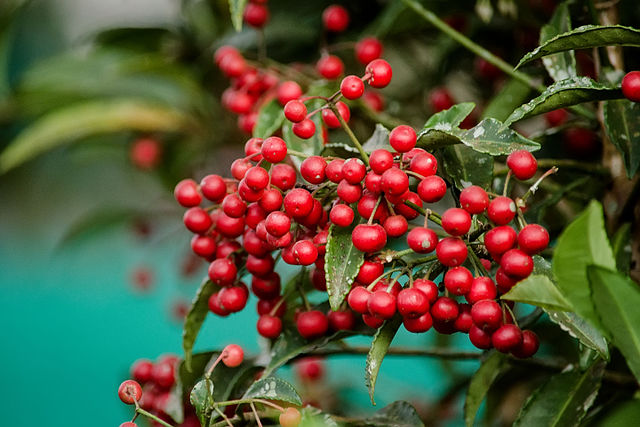
Christmas Berry
The Christmas Berry is a close relative of the goji berry. These bright red fruits should not be eaten raw. This is largely due to the fact that they are extremely astringent and just don’t have a great flavor when eaten fresh off the plant. When eaten raw in large quantities, they are considered toxic. The toxic compounds are released during the cooking process.
These berries are best enjoyed when mixed with something sweet. Consider using your Christmas Berries in syrup.
Christmas Berries love growing in areas where salt is prevalent. You’ll find them on mangrove edges, salt marshes, and dunes on Florida’s coasts. They are bright red, grow in clusters, and are found on a woody shrub. The shrub has woody stems and green leaves.
You’ll find ripe Christmas Berries in Florida in late autumn or early winter.
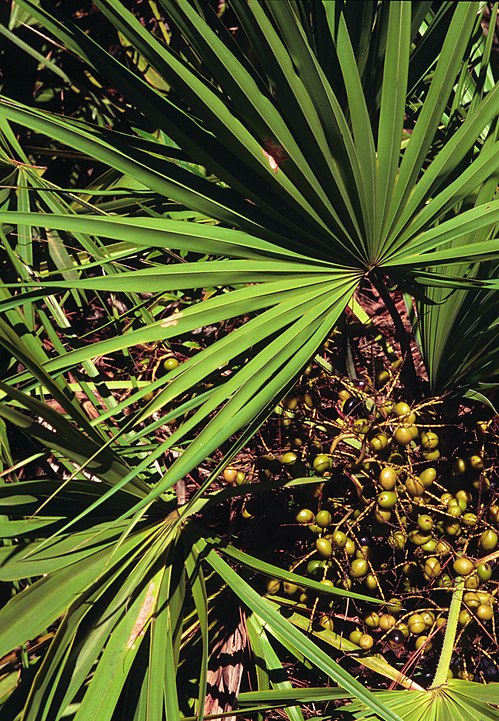
Saw Palmetto Berries
The first thing to say about these berries is that it’s illegal to pick them in the state of Florida without a permit. In 2018, the Florida Department of Agriculture and Consumer Services made it a legal requirement that anyone picking these berries acquire a permit first. This is true even on your own property, so be very careful about this.
Saw Palmetto (Serenoa repens) is a large shrub with fan-shaped green leaves and white flowers. It’s commonly found in sandy soils across Florida, especially in disturbed areas. Its berries ripen at the end of the hot Florida summer. The berries are considered essential for native wildlife.
Today, largely due to the permit requirement, saw palmetto berries aren’t often consumed by humans. The berries have been used historically by Native Americans for medicinal purposes. Modern research suggests potential benefits for prostate health. You may find extracts from the berries sold in health food stores for this reason.
Florida Offers a Diverse Environment For Foragers to Explore
Florida’s diverse ecosystems offer a wealth of wild berries waiting to be explored and enjoyed by foragers and outdoor enthusiasts. From the sweet muscadine grapes of North Florida to the unique sight of saw palmetto or American beautyberries, there are edible treasures to be found across the state. Just remember to consult a reliable field guide and exercise caution when foraging to ensure your safety and respect for nature. Whether you’re in North Florida or South Florida, in late spring or early summer, venture out and discover the goodness of the edible native plants that Florida has to offer.
The Sunshine State also hosts a plethora of other wild edible plants, such as the cabbage palm or swamp cabbage, purslane, and chickweed, and a wide variety of wild citrus, like kumquats and oranges. These native edibles are delicious and definitely worth seeking out. From the sandy soil of North Florida to the lush landscapes of South Florida, there’s a wealth of delicious and nutritious options waiting to be discovered right in your own backyard.
Recent Posts
The only venomous snakes in Washington State are Northern Pacific Rattlesnakes. The Northern Pacific Rattlesnake (Crotalus oreganus oreganus) is a sub-species of the Western Rattlesnake. Anyone...
Skunks are not classified as true hibernators. But they go into a state of torpor when the weather gets cold. Skunks are light sleep hibernators, along with opossums, bears, and raccoons. ...
